Michael Flynn's Blog, page 49
August 29, 2011
Hot From the New York Times
MARTIANS BUILD TWO IMMENSE CANALS IN TWO YEARS;
Vast Engineering Works Accomplished in an
Incredibly Short Time by Our Planetary Neighbors
-Wonders of the September Sky.ACCORDING to a telegram dated Aug. 17, from Flagstaff Observatory,
Arizona, Dr. Percival Lowell announces the rediscovery of two new canals
of Mars, which were seen for the first time at the last opposition in
1909. The canals are now very conspicuous, and attracting world-wide
attention because of their startling significance.
http://query.nytimes.com/mem/archive-free/pdf?res=F20E13FF3D5813738DDDAE0A94D0405B818DF1D3
August 28, 2011
August 27, 2011
Odds and Ends
27 August 1911
"At a convention of 13 suffragists at Ed. Stermer's store at Mauch Chunk, there was a lively discussion on women's rights. The fat women concluded that they had the same rights as men, but the lean ladies argued the opposite, and on a vote being taken the fats beat the leans by one vote and the meeting broke up in a wrangle. Stermer was chairman, but he had to leave via the back yard after trying to bring the two factions together."-- The Easton Express+ + +
Disaster Upon Disaster
Not only did we on the East Coast have to deal with the devastation of the 8/23 Earthquake, a portion of whose damage is shown below
[image error]
but now we must brace for HURRICANE IRENE! A Category 1 hurricane. Granted, it is making landfall coincident with high tide, but still it seems a bit hyperbolic. No one has mentioned Global Warming™ yet, and it is the only hurricane to make landfall in the past three years. Perhaps they are waiting for people to forget when they were announcing during the Year of Many Hurricanes that the Global Warming™ computer models predicted more and stronger hurricanes; then shut up real fast when it became fewer and weaker. Don't worry, though. Models were made to be adjusted and, as my cosmologist friend is wont to say, "With seven variables I can model any set of data - as long as I get to choose the coefficients." Thank goodness they changed it to Climate Change just in time. That way it doesn't matter which way the wind blows. The theory will swivel to point in that direction.
Blaming weather on climate change is a bit like blaming motion on location change.
Meanwhile, our intrepid TV meteorologists, having lacked for hurricane disaster stories for three years, are making the most of things, leaning into the wind and spray (against a backdrop of folks picnicking on the seawall), and speaking bravely and portentiously of dire things to come. The Delaware, I have just learned is already 4 feet above normal, not far from flood stage of 22 feet.
 Okay, maybe a little far from flood stage. My prediction: a usual amount of flooding as per the increased runoff since all the New Yorkers came out and paved over the Poconos. But nothing like 1955, when the Portland-Columbia bridge (at 725 feet the longest covered bridge in the country) broke loose in the flooding after Connie+Diane and struck the Gibraltar of the Delaware - the Easton-Phillipsburg Bridge - like a battering ram, taking out the center span. The water crested at just under 44 feet, five or six feet higher than the Pumpkin Freshet of 1903.(*) And raced through a building with the boastful, if piquant ad: World's Fastest Car Wash.
Okay, maybe a little far from flood stage. My prediction: a usual amount of flooding as per the increased runoff since all the New Yorkers came out and paved over the Poconos. But nothing like 1955, when the Portland-Columbia bridge (at 725 feet the longest covered bridge in the country) broke loose in the flooding after Connie+Diane and struck the Gibraltar of the Delaware - the Easton-Phillipsburg Bridge - like a battering ram, taking out the center span. The water crested at just under 44 feet, five or six feet higher than the Pumpkin Freshet of 1903.(*) And raced through a building with the boastful, if piquant ad: World's Fastest Car Wash. So, I laugh at Irene. Ha-ha! It is to laught. You don't have a patch on Connie and Diane, the twin sisters of August 1955. I laugh in part because I live high above on the Lehigh Heights, aka German Hill, perched on 300 feet of limestone and granite.
(*) The Pumpkin Freshet of 1903. So called because somewhere upstream the waters scoured a pumpkin farm and the river flowed choked with pumpkins all the way to Philadelphia. It was in the survival of this flood that the Easton-P'burg bridge was dubbed "The Gibraltar of the Delaware."
Kevin's Bacon at Five Degrees
On the Connectedness of Nature
That any two things in the universe are connected can be demonstrated inductively by the magic of Google. It is not necessary that to be computationally tractable a process must be informationally encapsulated. Take any two words. The Stanford Encyclopedia of Philosophy uses "banana" and "mandolin" in an article on the Frame Problem. If you google it, you obtain 2,690,000 hits.
So I tried "melancholy" + "eels" and obtained 3,090,000 hits, including unlikely poetry precisely imagining melancholy eels at poetry-of-despair.
Then I tried "elephant" + "petunia" only to discover that there is a plant called an elephant petunia along with 3,570,000 results other hits.
Then I opened the dictionary at random and got "theosophy" + "hemorrhage." This yielded a mere 71,300 hits, including those with "theosophist" (at least one of whom appears to have died of a hemorrhage) and "theosophical."
Then "canthus" (the corners where the upper and lower eyelids meet) + "deliverance." After quote-enclosing "canthus" to avoid the homonymous "can thus," I obtained 4,240 freaking hits and learned that surgical management of carcinomas at the inner canthus involves rotation and deliverance of the flap under the glabellar skin.
Your task, my devoted henchmen, is to explore this phenomenon yourselves.
August 26, 2011
Consciousness Continued
Sydney Eddison recounts [a story] of the violinist Itzhak Perlman, who as a boy was struck with polio and who as a man must walk with the aid of leg braces and crutches:
At a concert on the night of November 18, 1995, at Avery Fisher Hall in New York City, one of the strings of his violin suddenly snapped during the performance. Stunned, the audience held their collective breath, expecting Perlman to stop and leave the stage. Instead, he paused, then continued playing — adjusting, creating, compensating as he went along, and when he put down his bow at the end of the concert, a mighty roar of applause filled the hall. When it had died down, he spoke to the audience: “You know, sometimes it is the artist’s task to find out how much music you can still make with what you have left.”+ + +
The quote was found in this article that touches on consciousness.
Consciousness Continued
Sydney Eddison recounts [a story] of the violinist Itzhak Perlman, who as a boy was struck with polio and who as a man must walk with the aid of leg braces and crutches:
At a concert on the night of November 18, 1995, at Avery Fisher Hall in New York City, one of the strings of his violin suddenly snapped during the performance. Stunned, the audience held their collective breath, expecting Perlman to stop and leave the stage. Instead, he paused, then continued playing — adjusting, creating, compensating as he went along, and when he put down his bow at the end of the concert, a mighty roar of applause filled the hall. When it had died down, he spoke to the audience: “You know, sometimes it is the artist’s task to find out how much music you can still make with what you have left.”+ + +
The quote was found in this article that touches on consciousness.
August 24, 2011
The Wide-Awakes
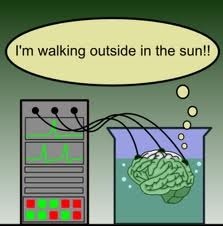 At RENOvation, the World Science Fiction Convention held in Reno NV this past week, there was a panel with the title "What is Consciousness?" The panel did yeoman's work without (as is customary at con panels) ever coming to a conclusion, let alone a consensus conclusion. I was in the audience and did not participate, but a few points struck me afterwards.
At RENOvation, the World Science Fiction Convention held in Reno NV this past week, there was a panel with the title "What is Consciousness?" The panel did yeoman's work without (as is customary at con panels) ever coming to a conclusion, let alone a consensus conclusion. I was in the audience and did not participate, but a few points struck me afterwards. There were several initial attempts to define consciousness, though no one tried to define consciousness by negation in the obvious sense; viz., "whatever it is you have when you are not unconscious." They seemed to get all mixed up with "sentience," "intelligence," "empathy," and so forth. All these terms were used interchangeably by panelists.
One of the participants proudly declared himself a materialist, but never specified of what material "consciousness" is made. My theory is that it is made of the same 'material' as momentum, gravity, or reproductive fitness; viz., none. Physics has been edging away from materialism for the past hundred years. Quantum mechanics dealt it a deadly blow, leading Heisenberg to remark that "It has become clear that the desired objective reality of the elementary particle is too crude an oversimplification of what really happens." IOW, materialism no longer accounts even for matter. The preferred term is "physicalist."
 It soon became clear that what most of the panelists meant by "consciousness" was not consciousness, but "mind." This sort of terminological imprecision is typical of such panels, which are often discussed "on the fly" and with no expectation of rigor. The usual "mind is the software and the brain is the hardware" model was trotted out, but not questioned.
It soon became clear that what most of the panelists meant by "consciousness" was not consciousness, but "mind." This sort of terminological imprecision is typical of such panels, which are often discussed "on the fly" and with no expectation of rigor. The usual "mind is the software and the brain is the hardware" model was trotted out, but not questioned. This is a very attractive model because we are in love with computers. When high-tech meant hydraulics -- think of the aquaducts of Rome, the water clocks, and so on -- the mind was conceived in hydraulic terms, and we got the theory of humors. Later, when
 mechanical contraptions were all the rage, the mind was conceived as a mechanical contrivance full of gears and springs and such. A keen thinker was said to have a clockwork mind. Such poetic metaphors can be useful, but they ought not to be confused with scientific facts. The mind is no more a computer than it is a machine than it is a hydraulic system. Let us not confuse the object with the spotlight, even if the spotlight coming from a new angle throws the thing into sharp relief.
mechanical contraptions were all the rage, the mind was conceived as a mechanical contrivance full of gears and springs and such. A keen thinker was said to have a clockwork mind. Such poetic metaphors can be useful, but they ought not to be confused with scientific facts. The mind is no more a computer than it is a machine than it is a hydraulic system. Let us not confuse the object with the spotlight, even if the spotlight coming from a new angle throws the thing into sharp relief. No one on the panel mentioned any objections to the mechanistic theory of mind, such as those raised by Gödel, Lucas, or Penrose, or those raised by Searle, Putnam, and others. In all likelihood, they were unaware of them. The software-hardware metaphor is just too dang attractive to SF folks, so it is accepted without question.
 Free Will, but not Cheap. I even heard one panelist -- the materialist, of course -- refer to "the illusion of a self" with no evident irony. (What exactly is it that is experiencing the illusion?) But then, all materialism eventually decays into eliminativist materialism.
Free Will, but not Cheap. I even heard one panelist -- the materialist, of course -- refer to "the illusion of a self" with no evident irony. (What exactly is it that is experiencing the illusion?) But then, all materialism eventually decays into eliminativist materialism. Then there was the saw about the brain making a decision before the test subject was aware of making it. Libet's experiment was brought up with touching faith, but with no skepticism . Materialists are often not material enough: all that they can affirm is that some part of the brain warmed up in preparation for a task which the subject knew well beforehand that he would be making. But what justifies equating the fact of "blood-flow to brain region X" detected by an fMRI with the interpretation "Aha! That was the moment of decision!" But under such conditions, why wouldn't the body show some preparatory activity?
So What is this "Consciousness" Thingie?
 Anima (or ενεργια) is simply whatever a living being has that a dead one does not. "Does a petunia have a soul (or animating principle)" becomes then "is a petunia alive." This can be verified empirically.
Anima (or ενεργια) is simply whatever a living being has that a dead one does not. "Does a petunia have a soul (or animating principle)" becomes then "is a petunia alive." This can be verified empirically. Of the three levels of psyches -- vegetative, sensitive, and rational -- it is clear that the vegetative is not conscious. No one ever supposed that a petunia pondered. But those animals with sensitive psyches, that is, which follow a stimulus-sensation-response loop, some degree of consciousness exists. A cockroach may not be conscious, but surely a cat is. A cockroach "knows" certain things -- head for food, stay close to walls, etc. -- but a cat knows that it knows. I think. Chastek says that "our debates about 'consciousness' are debates about something we have in common with hamsters."
But this is not too exciting. It is a "basal stage of consciousness" in which a cascade of meaningless particles -- photons, scent molecules, compression waves, or even heat or sonar pulses, depending on what species you are -- crash against the sensory organs like the waves of the gray North Sea against the rocky shores of the Hebrides. But there is a higher stage than this indifference, or passive reception of sensation; and that is awareness. We can not only see; we can look.
When I am looking out the window and see a squirrel race by, and when this catches my awareness, I don’t first see “the squirrel is running”. This is too distinct. Rather, I have a nameless and inarticulate- though very vivid and clear- experience that could be understood in one of a thousand ways. If I have just spent the last three weeks trying to keep squirrels out of my yard, or if I am a pagan priest who sees squirrels as a sign of great fortune, or if I am a grad student paid to stare out a window and count how many squirrels go by, the experience will be in one sense the same, in another sense different.
Chastek, "Stages of consciousness"
I once noted thusly in an afterword to a story about aliens:
I look out the front window of my childhood home and I would see...a tree.
Now, all that I could actually see was the trunk. (It was a rather tall tree.) But why did I not think “trunk” when I looked at it? Or even “bark”? For that matter, why did I not think “sycamore,” since that is what it was?
In other words, we humans know things first at some level between the very specific (“I see the bark of the trunk of the sycamore tree”) and the very general (“I see a plant”). We perceive the individual, not its parts and not the whole of which it is a member.
Now, I have an alien here with me. (Trust me on this.) I point out the window. “What do you see?” “An ecosphere,” he/she/it replies. Such an alien, knowing the set before knowing the individual, would have to understand things in a different way than we do.
Flynn, The Forest of Time, afterward to "The Common Goal of Nature"
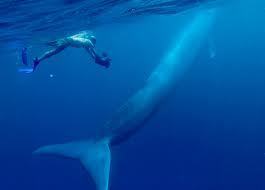 Now the manner in which we privilege the photons reflecting off the squirrel (or the sycamore) over all the other photons striking our retinas cannot possibly lie in the photons themselves, which are indifferent to such matters as what they bounced off of. Nor is it likely to lie in the neurons of the brain, which simply respond to the photons. Rather, in mind (as opposed to mere indifferent consciousness or even awareness) there is intention. We not only see the squirrel; we look at it. And the different modes of looking as suggested by Chastek, indicate that the intention does not reside in the cascade of particles, because the sensation of seeing the squirrel cross our vision is the same regardless of our intention in taking note of it.
Now the manner in which we privilege the photons reflecting off the squirrel (or the sycamore) over all the other photons striking our retinas cannot possibly lie in the photons themselves, which are indifferent to such matters as what they bounced off of. Nor is it likely to lie in the neurons of the brain, which simply respond to the photons. Rather, in mind (as opposed to mere indifferent consciousness or even awareness) there is intention. We not only see the squirrel; we look at it. And the different modes of looking as suggested by Chastek, indicate that the intention does not reside in the cascade of particles, because the sensation of seeing the squirrel cross our vision is the same regardless of our intention in taking note of it. We could compare the way we harvest these photons rather than those to the way a baleen whale seines the ocean for krill. Animals -- at least the higher sort -- exhibit intention. They do not respond to stimuli; they seek out the stimuli they want. The lioness does not passively react to the scent of the gazelle; she seeks out the scent or sight of the gazelle.
So What is this "Mind" Thingie?
Beyond the petunia, and beyond indifferent consciousness and beyond even awareness, lies mind. The con panel kept oscillating between consciousness and mind without pausing to make any distinctrion. The Aristotelian-Thomist model of the rational psyche is shown below. You've seen it here before, so we need not dwell on it; but this is what most of the panel meant most of the time.
 Oddly, a couple panelists brought up Aristotelian or Thomistic points, evidently without realizing that they were doing so. More oddly still, one of them was the materialist! Apparently, materialism may lead to a certain unconscious incoherency in one's world-view. Of course, what was mentioned was the inseparability of mind and brain. Now, it would be more correct to say the inseparability of mind and body, as it is well-known that other parts of the body are involved in "cognition." The senses, the motor neurons, the glands, and so on. This simply boils down to Aristotelian hylemorphism, the oneness of the individual. And the reason, for those who wonder, why the Creed looks forward to the Resurrection of the Body for the psyche to be reunited with.
Oddly, a couple panelists brought up Aristotelian or Thomistic points, evidently without realizing that they were doing so. More oddly still, one of them was the materialist! Apparently, materialism may lead to a certain unconscious incoherency in one's world-view. Of course, what was mentioned was the inseparability of mind and brain. Now, it would be more correct to say the inseparability of mind and body, as it is well-known that other parts of the body are involved in "cognition." The senses, the motor neurons, the glands, and so on. This simply boils down to Aristotelian hylemorphism, the oneness of the individual. And the reason, for those who wonder, why the Creed looks forward to the Resurrection of the Body for the psyche to be reunited with. In any case, we could define "mind" as in some sense the Intellect-Volition track of the rational psyche diagramed above. We can advance arguments that this is an immaterial portion of the psyche and is subsistent. Unlike sights, sounds, motions, and the like, the objects of the intellect and volition are themselved immaterial:
universals like "dog" rather than sensible material objects like Lassie and Fido and Rin-Tin-Tin
mathematical bodies like the Pythagorean theorem or the irrationality of SQRT(2), which are neither material nor subjective. (If they were subjective, they could vary from mind to mind.)
propositions like "Snow is white." Snow is material, and whiteness is material; but the proposition that X is A is not itself material, save in the trivial sense that it may be embodied in ink squiggles, photons on the screen, or patterns of synapses.
Given that its objects are immaterial, there is no reason for the rational faculties to be material and hence no reason for the rational part of the psyche to perish when the material body perishes. Everyone, including Aquinas, is a physicalist as regards the psyches of plants and other animals and (when they are carefully precise) the non-rational parts of the human psyche.
Those surprised that thoughts make footprints in the brain oft insist that the footprints are the thoughts, even though this destroys the basis for objectivity. Of course, thought is accompanied by neural patterns; but if thoughts are only neural patterns, then the Other is known only as a modification of my self and not as something other than myself. Objectivity is to know the other precisely as other.
And why is it that people worry over the "mind-body problem" created by poor old Rene Descartes, but no one is concerned about the "sphere-rubber problem" when it comes to basketballs? Let alone the "conservation of momentum-body" problem. For an hysterical parody of the mind-body interaction problem, see here:
Interaction Problems.
So What About the Squirrel?
All this being so, why is there no univesal agreement? Well, there is no universal agreement on even so empirical a thing as quantum theory -- on another panel, Greg Benford mentioned that there were five major theories -- so why should there be agreement on anything else? The facts are the same for everyone, but the meaning of the facts may differ, as did the meaning of the squirrel in Chastek's example. Similarly, the facts about the mind, insofar as we know them, carry different meanings to different observers.
August 14, 2011
A List
NPR conducted a listener's poll to find out the 100 favorite SF and Fantasy books of people who listen to NPR. Some of the popular titles are puzzling and at least one seems to sit ill upon the mind of the stereotypical NPR listener. In any case, the list is here: Top 100 Science-Fiction, Fantasy Books
Note that trilogies, quadrilogies, and no-end-in-sight-ologies are counted as one entry. (This is an ontological weakness: what if you adored one volume and loathed another in the series?) I note also a strange tendency in fantasy titles toward doublewords togetherpressed. I also note that Piers Anthony's Xanth series rubs shoulder with The Time Traveler's Wife and 1984. Also, a mainstream book that can be called "science fiction/fantasy" seems to make the grade.
Your challenge: What should not be here? What is missing? Inquiring minds want to know?

1. The Lord Of The Rings Trilogy, by J.R.R. Tolkien
2. The Hitchhiker's Guide To The Galaxy, by Douglas Adams
3. Ender's Game, by Orson Scott Card
4. The Dune Chronicles, by Frank Herbert
5. A Song Of Ice And Fire Series, by George R. R. Martin
6. 1984, by George Orwell
7. Fahrenheit 451, by Ray Bradbury
8. The Foundation Trilogy, by Isaac Asimov
9. Brave New World, by Aldous Huxley
10. American Gods, by Neil Gaiman
11. The Princess Bride, by William Goldman
12. The Wheel Of Time Series, by Robert Jordan
13. Animal Farm, by George Orwell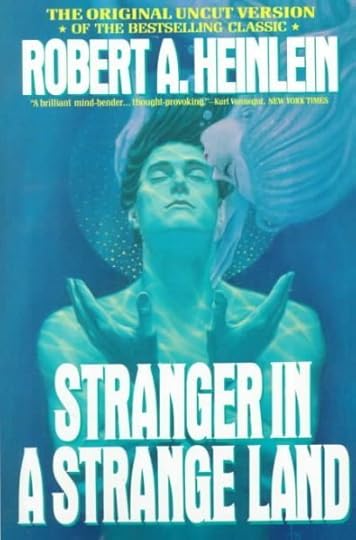 14. Neuromancer, by William Gibson
14. Neuromancer, by William Gibson
15. Watchmen, by Alan Moore
16. I, Robot, by Isaac Asimov
17. Stranger In A Strange Land, by Robert Heinlein
18. The Kingkiller Chronicles, by Patrick Rothfuss
19. Slaughterhouse-Five, by Kurt Vonnegut
20. Frankenstein, by Mary Shelley
22. The Handmaid's Tale, by Margaret Atwood
23. The Dark Tower Series, by Stephen King
24. 2001: A Space Odyssey, by Arthur C. Clarke
25. The Stand, by Stephen King
26. Snow Crash, by Neal Stephenson
27. The Martian Chronicles, by Ray Bradbury
 28. Cat's Cradle, by Kurt Vonnegut
28. Cat's Cradle, by Kurt Vonnegut29. The Sandman Series, by Neil Gaiman
30. A Clockwork Orange, by Anthony Burgess
31. Starship Troopers, by Robert Heinlein
32. Watership Down, by Richard Adams
33. Dragonflight, by Anne McCaffrey
34. The Moon Is A Harsh Mistress, by Robert Heinlein
35. A Canticle For Leibowitz, by Walter M. Miller
36. The Time Machine, by H.G. Wells
37. 20,000 Leagues Under The Sea, by Jules Verne
38. Flowers For Algernon, by Daniel Keys
39. The War Of The Worlds, by H.G. Wells
40. The Chronicles Of Amber, by Roger Zelazny
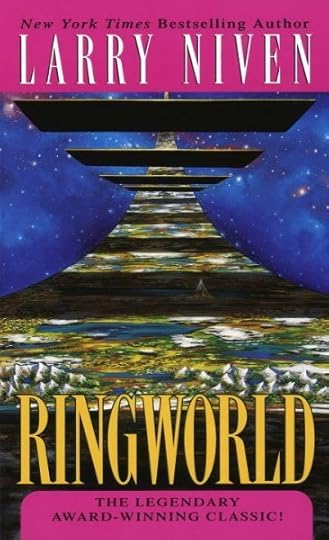 41. The Belgariad, by David Eddings
41. The Belgariad, by David Eddings42. The Mists Of Avalon, by Marion Zimmer Bradley
43. The Mistborn Series, by Brandon Sanderson
44. Ringworld, by Larry Niven
45. The Left Hand Of Darkness, by Ursula K. LeGuin
46. The Silmarillion, by J.R.R. Tolkien
47. The Once And Future King, by T.H. White
48. Neverwhere, by Neil Gaiman
49. Childhood's End, by Arthur C. Clarke
50. Contact, by Carl Sagan
51. The Hyperion Cantos, by Dan Simmons
52. Stardust, by Neil Gaiman
53. Cryptonomicon, by Neal Stephenson
54. World War Z, by Max Brooks
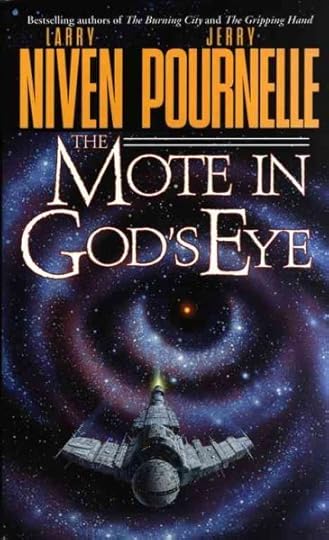 55. The Last Unicorn, by Peter S. Beagle
55. The Last Unicorn, by Peter S. Beagle56. The Forever War, by Joe Haldeman
57. Small Gods, by Terry Pratchett
58. The Chronicles Of Thomas Covenant, The Unbeliever, by Stephen R. Donaldson
59. The Vorkosigan Saga, by Lois McMaster Bujold
60. Going Postal, by Terry Pratchett
61. The Mote In God's Eye, by Larry Niven & Jerry Pournelle
62. The Sword Of Truth, by Terry Goodkind
63. The Road, by Cormac McCarthy
64. Jonathan Strange & Mr Norrell, by Susanna Clarke
65. I Am Legend, by Richard Matheson
66. The Riftwar Saga, by Raymond E. Feist
67. The Shannara Trilogy, by Terry Brooks
68. The Conan The Barbarian Series, by R.E. Howard
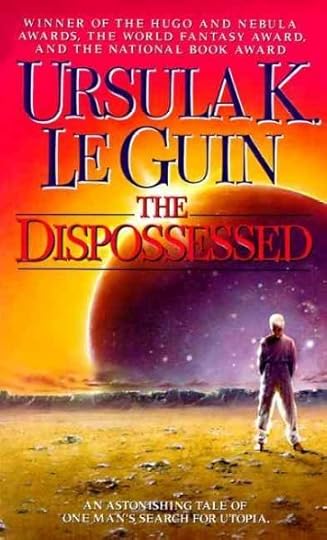 69. The Farseer Trilogy, by Robin Hobb 70. The Time Traveler's Wife, by Audrey Niffenegger
69. The Farseer Trilogy, by Robin Hobb 70. The Time Traveler's Wife, by Audrey Niffenegger71. The Way Of Kings, by Brandon Sanderson
72. A Journey To The Center Of The Earth, by Jules Verne
73. The Legend Of Drizzt Series, by R.A. Salvatore
74. Old Man's War, by John Scalzi
75. The Diamond Age, by Neil Stephenson
76. Rendezvous With Rama, by Arthur C. Clarke
77. The Kushiel's Legacy Series, by Jacqueline Carey
78. The Dispossessed, by Ursula K. LeGuin
79. Something Wicked This Way Comes, by Ray Bradbury
80. Wicked, by Gregory Maguire
81. The Malazan Book Of The Fallen Series, by Steven Erikson
82. The Eyre Affair, by Jasper Fforde
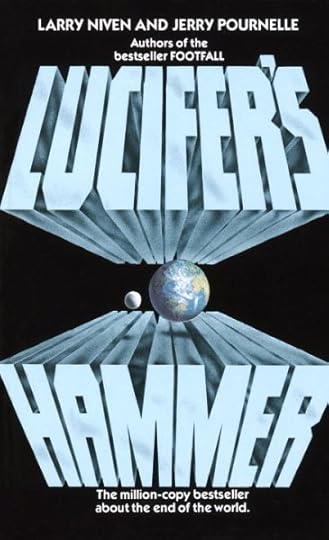 83. The Culture Series, by Iain M. Banks
83. The Culture Series, by Iain M. Banks84. The Crystal Cave, by Mary Stewart
85. Anathem, by Neal Stephenson
86. The Codex Alera Series, by Jim Butcher
87. The Book Of The New Sun, by Gene Wolfe
88. The Thrawn Trilogy, by Timothy Zahn
89. The Outlander Series, by Diana Gabaldan
90. The Elric Saga, by Michael Moorcock
91. The Illustrated Man, by Ray Bradbury
92. Sunshine, by Robin McKinley
93. A Fire Upon The Deep, by Vernor Vinge
94. The Caves Of Steel, by Isaac Asimov
95. The Mars Trilogy, by Kim Stanley Robinson
96. Lucifer's Hammer, by Larry Niven & Jerry Pournelle
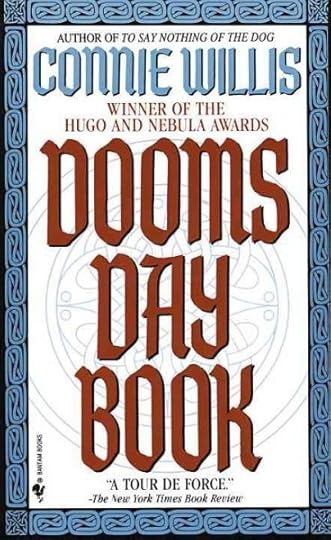 97. Doomsday Book, by Connie Willis 98. Perdido Street Station, by China Mieville
97. Doomsday Book, by Connie Willis 98. Perdido Street Station, by China Mieville99. The Xanth Series, by Piers Anthony
100. The Space Trilogy, by C.S. Lewis
August 9, 2011
A Blast from the Past

"This certifies that there has been placed on deposit in the treasury of the United States of America five silver dollars payable to the bearer on demand."
How quaint things were in those days.
Nowadays, the money is not backed by precious metals but by "the full faith and credit of the United States," which lately has been wearing a little thin. And the vast majority of people do not even remember that it was ever different. F.Paul Wilson once wrote that in 1890 a $20 gold piece would buy you a good three-piece tailored man's suit -- and it was still true at the time he wrote that the amount of gold that coin represented would buy a good three-piece tailored man's suit, although the nominal amount in fiat dollars would be much higher.
Okay, I suppose we took it on "full faith and credit" that there really were five silver dollars down at the Treasury. Perhaps they were in a sock stuffed in the bottom desk drawer. Or maybe there weren't any at all and everybody just pretended there were.
The gold vault was real. It's on Ft. Knox, next to the golf course; but even the army is not allowed inside the fence, so for all we know there is actually a bordello inside for G-men. It is also closely situated to a railway spur that runs through the fort; perhaps for a quick getaway by rail should the vault ever be looted.
Another vault is in the sub-basement of the Federal Reserve of New York, and this one I have an eyewitness for. There are cages down there, each labeled with the name of a country and each containing pallets stacked with bars of gold bullion. As opposed to bouillon cubes. Whenever Brazil makes a deal with Turkey, or whoever with whoever, a guy with a forklift goes into the Brazil cage and removes the proper amount of gold and physically moves it to the Turkey cage. Even though the gold never leaves the bedrock of Manhattan, the bars are still physically moved from cage to cage.
At one point there was talk of moving the gold vault to the East Rutherford facility, but cooler heads prevailed. I'm not sure that the swamps of northern New Jersey are as solid as the bedrock of Manhattan, but I am sure that a long string of trucks stuffed with gold and driving from the one to the other violates the Lord's Prayer thingie about "lead us not into temptation."
Aside: avoirdupois, which means "good-bye to money".... No wait. It means "goods of weight" and it was the unit used to weigh goods for sale. So why is silver and gold given in troy weight? (Actually only the troy ounce is still used.) Well, this was the weight used at the Great Fair of Troyes, a major international market event in the early Middle Ages. Here is the answer. Gold and silver are soft metals. In order to be useful for coinage, they are alloyed with base metals like nickel to provide hardness and durability. A typical gold coin might be around 92% fine gold. Hence, a coin that weighed one avoirdupois ounce would contain one troy ounce of gold. Kings, of course, were always trying to game the system by including lower proportions of gold. Nowadays, it's easier because all they have to do is run the printing presses a little longer. The principle is the same: more mass, but less value.
August 7, 2011
Tidbits
--Boston Globe, Aug. 5
This'll Show 'Em President Obama is committed to strengthening the United States Government's ability to prevent mass atrocities and serious human rights violations. . . . Today, President Obama is directing a comprehensive review to strengthen the United States' ability to prevent mass atrocities. The President's directive creates an important new tool in this effort, establishing a standing interagency Atrocities Prevention Board.
(We can hear the atrocitizers now: "Oh, no! Not a standing interagency board! What shall we do?")
Michael Flynn's Blog
- Michael Flynn's profile
- 237 followers



